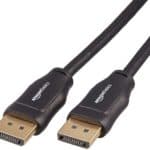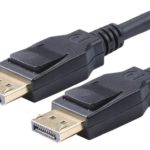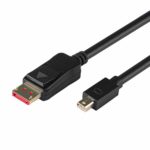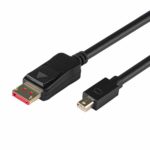Best DisplayPort cable
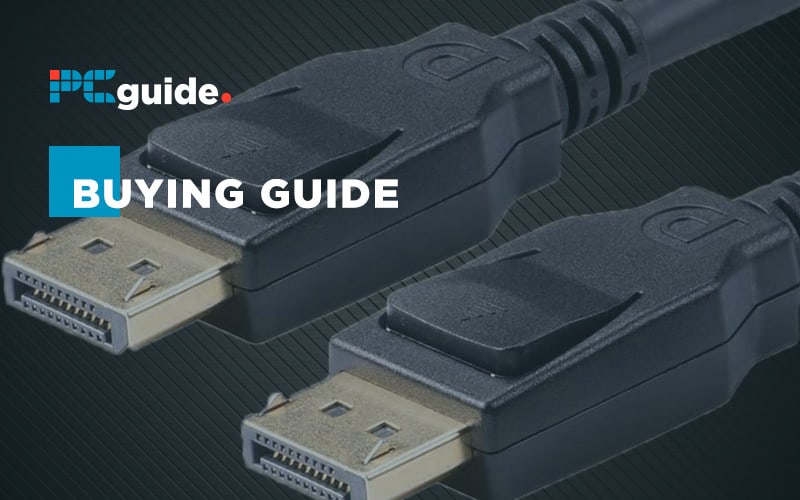
DisplayPort is a cable standard for connecting computer devices to displays, and it’s a format used by many different laptops and monitors. In the current revision of the standard, version 1.4, it’s capable of bandwidths of up to 32.4 Gbps, supporting video outputs of 8k resolutions at up to 120Hz frame rate when using the visually lossless DSC compression format. For video signals with lesser bandwidth demands, the older version 1.2 of the DisplayPort standard can offer bandwidth of up to 17.28Gbps, which will support 1080p at up to 240Hz frame rates, or 4K at up to 75Hz frame rate.
Broadly speaking, HDMI is more commonly used with audio visual equipment such as TVs, Blu Ray Players, and game consoles, whereas DisplayPort is more commonly used on computer devices such as desktop PCs, laptops, and monitors. The lines between these two categories of devices are perhaps more blurred than ever before, and there’s plenty of scenarios where someone might want to connect a computer to a TV or a game console to a monitor
If you have a DisplayPort capable computer or laptop and are looking to connect it to a DisplayPort capable display, you’ll be needing to get a DisplayPort cable, but it’s important to ensure that you get the right type of cable to suit your needs.
This is our roundup of the best DisplayPort cables available today.
Products at a Glance
Best DisplayPort cable
- VESA certified
- Great value
- Wide range of sizes available
- 1.2 DisplayPort standard
- No latch mechanism
- Only 1-year warranty
- VESA certified
- Extreme bandwidth capacity
- 2-year warranty
- Not the cheapest cable
- 1.4 spec might be overkill for many displays
- Not a well-known brand
- VESA certified
- Great range of lengths, important for a laptop cable
- Great value
- 1.2 DisplayPort standard
- No latch mechanism
- Only 1-year warranty
- VESA certified
- 1.4 capable of high bandwidth video
- Attractive connector design
- Slightly pricey
- No long term warranty
- No latch mechanism
Do I need a DisplayPort cable or a Mini DisplayPort cable?
In general, it’s only laptops that will use the smaller Mini DisplayPort connector. It’s especially common in Microsoft Surface devices, Lenovo’s ThinkPad line, and some Acer models. Newer laptops more commonly use the versatile USB-C format for handling data, power, and video, so it’s not as common as it used to be, but it’s still a very useful port on devices that are equipped with it.
For desktop computers, it’s far more likely that you’ll have the full-size DisplayPort, where most major GPUs are equipped with a DisplayPort connector. Some will include HDMI too, but depending on your display and bandwidth requirements, DisplayPort may be the better option. The rule of thumb is that DisplayPort will be better for connecting to a monitor, and HDMI makes more sense for a TV.
Do I want a cable that comes with a latch?
The full-size DisplayPort is designed to support a physical latch that will lock the cable in place, and let cables that come with a latch lock into place, and require pressing the built-in button to be pressed in order to release the cable. If you’re planning to connect the cable and then leave it in place, this can be a great option for securing it in position, minimizing any chance of the cable being knocked out when accessing any other nearby ports. The downside is that it’s trickier to connect and disconnect the cable. If you’re planning to regularly remove the cable to connect it to different displays and devices, this may be an inconvenience. Ultimately, it’s going to depend on your preference, and how you intend to use the cable, to decide which style you want to
What does “VESA certified” mean?
VESA stands for “Video Electronics Standards Association”, and is an association of device manufacturers that maintain the DisplayPort standard, and ensure compliance between different displays and devices. This ensures that all DisplayPort compliant devices will work with each other. A VESA certified cable is one that will be compatible with all other DisplayPort devices.
Our Verdict
The UVI2 DisplayPort 1.4 Cable is our top pick. It’s an extremely high bandwidth cable that is still reasonably priced. It’s going to be somewhat overkill for many kinds of requirements for today, but it’s not much pricier than similar 1.2 standard cables and will be extremely future proof as larger, higher resolution and higher frame rate displays become the norm in coming years. The 2-year warranty also reassures buyers that this cable will still be working when they do come round to upgrading their devices and displays.
The additional security provided by the latch mechanisms won’t be to everyone’s tastes, but we think it’s a nice extra feature that means this cable is less likely to get dislodged when plugging other cables or devices into your computer.


